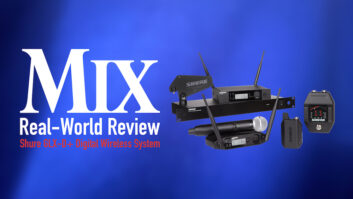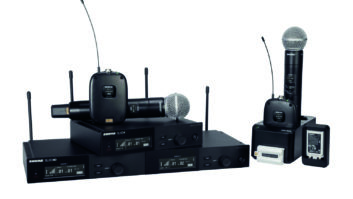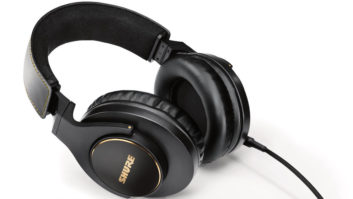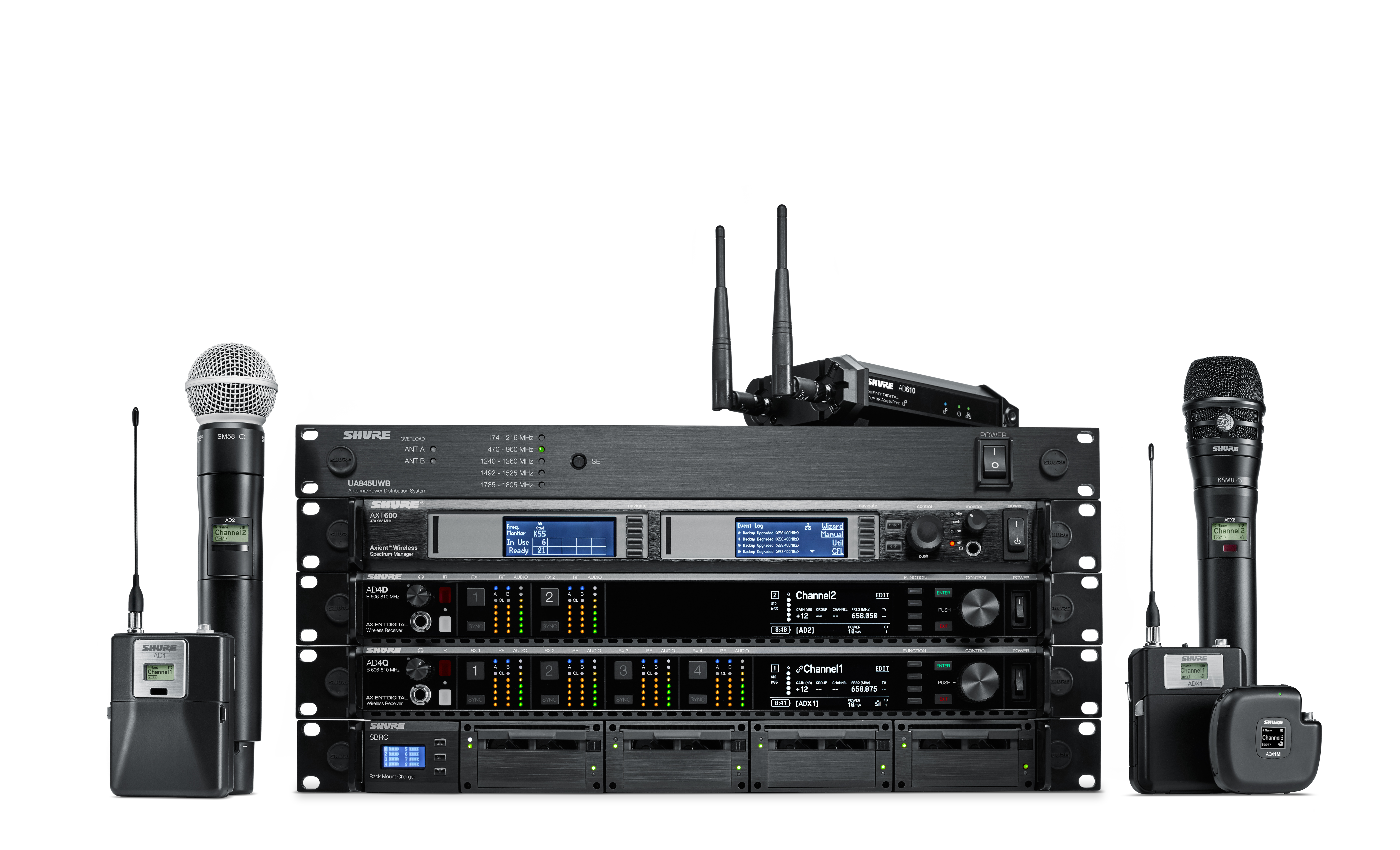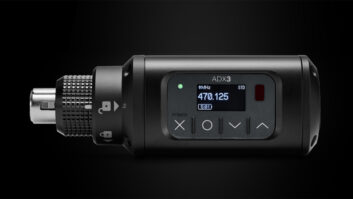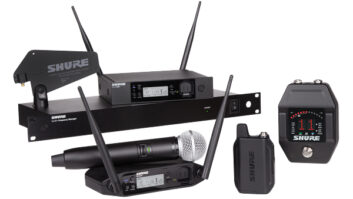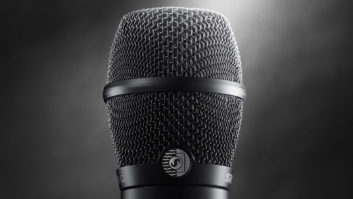When it comes to audio equipment, looks can be deceiving; however, I was pleased to discover that was not the case with the Shure Axient Digital wireless microphone system.
For this review, I used the AD4Q receiver with AD1 bodypack transmitter and AD2/KSM9 handheld transmitter, and my first positive impression of the system was due to its looks, thanks to a sleek four-channel receiver design that packs a lot of punch into a 1U rackmount device. The multicolor LEDs give you tons of real-time information, with Shure providing two rows of five LEDs and one overload LED, giving you a detailed reading on both antennas. The audio LED meter also seems much more fluid in its real-time response.
Shure included a ton of useful displays, meters and controls on the front of the AD4Q: Sync, Quick Channel select, a master display screen with individual channel information, battery life, RF info, and easy access function buttons to quickly glance at other necessary details. It only takes once or twice toggling through the menu to understand the navigation basics. A headphone jack with individual volume control on the front of the panel is also super helpful for an A2 troubleshooting problems that may come up.
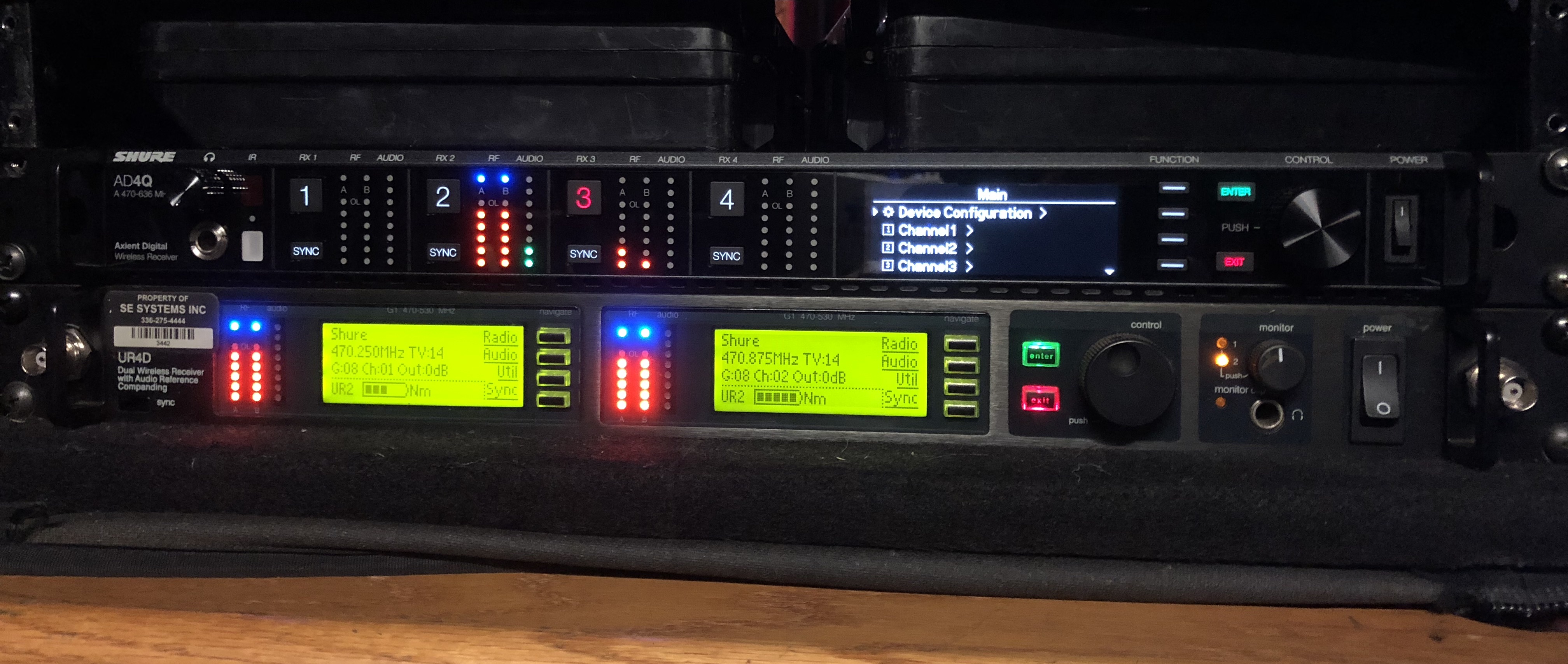
I’m heavily influenced by how quickly I can get a piece of equipment working. Since speed is key for most of my setups, I always feel that the less time I need to sit down and read through a manual to do a quick and dirty setup, the better. That was certainly the case for this system: My first application of the Axient system was for a production of Les Misérables at Reynolds Auditorium.
I set up the receiver with the two half-wave antennas that arrived with it. I did not cascade or use the Quadversity as I did not have the additional antennas required. But I did look into how useful the Quadversity would prove in high-demand situations. There are four coaxial ports on the back: A through D. A and B are traditional antenna ports; C and D can be configured to cascade to another device or to add two more antennas for even more coverage. In this configuration, the receiver outputs two channels of audio. The AD4Q is set up to maximize its transmission and minimize the potential for drop-outs.
Another significant RF feature is the Frequency Diversity, which transmits audio on two independent frequencies. This can be done using the ADX2FD handheld transmitter or two single-carrier AD/ADX transmitters. The huge benefit of this feature is drop-out prevention; the system uses two frequencies to output a single channel of audio when one of the frequencies experiences interference. An added bonus to the RF interference management is an alert that responds to signal degradation and gives an option to move to a clean, open frequency either manually or automatically. A list of backup frequencies can be set up for this purpose, or one can be selected automatically through Wireless Workbench. In the setup, you can also determine if you want the mode to allow, warn or block unwanted (i.e., unregistered) transmitters that are detected.
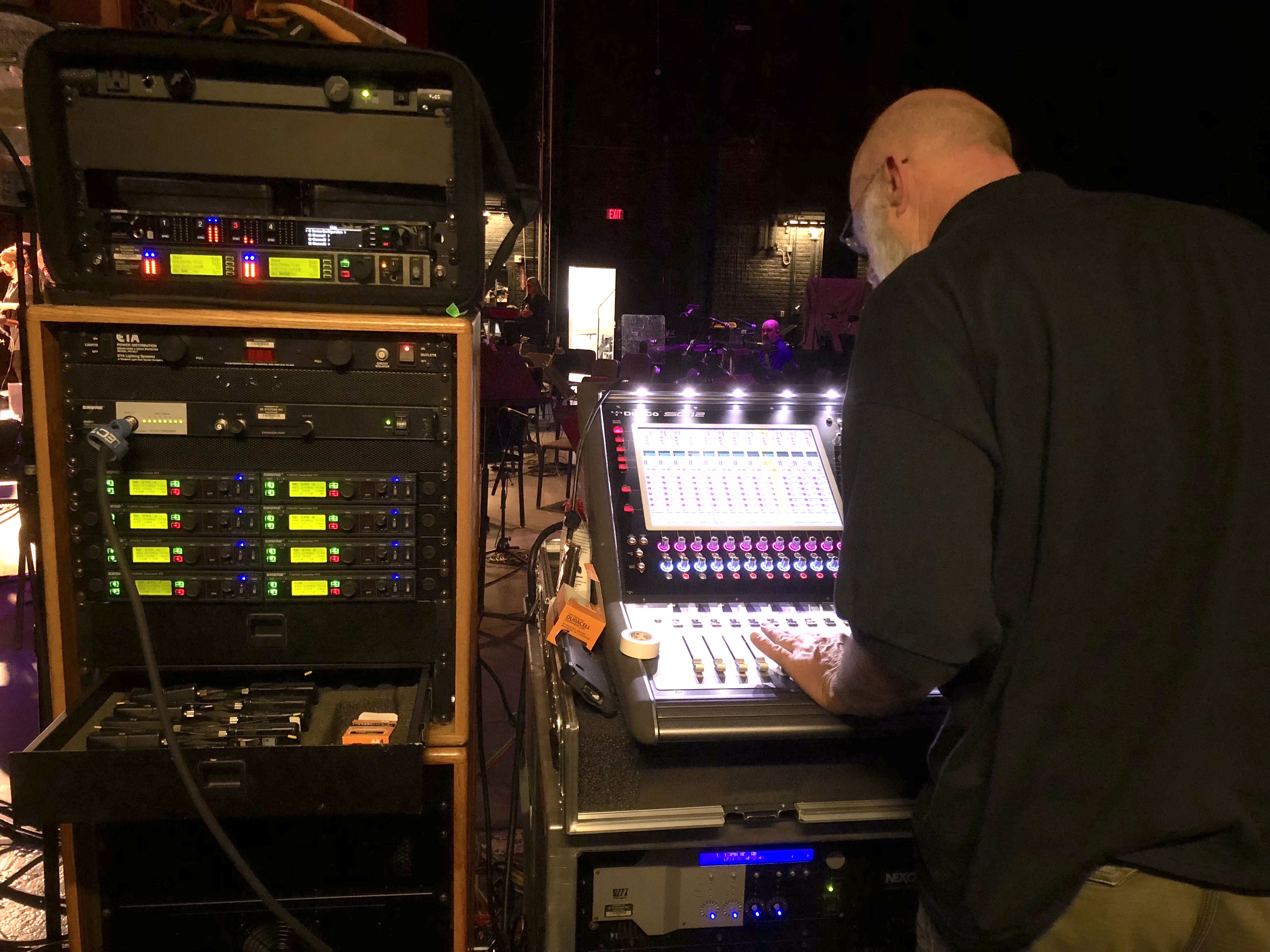
We put the AD1 bodypack transmitter with a Countryman E6 element on our lead. The high-school senior playing Jean Valjean was challenged with a very intense role that required loud, boisterous singing, as well as intimate whispering, and the Axient allowed some room for this extreme dynamic range. The sound of his voice felt like it was very natural and not squashed with digital compression—a pleasant difference from the transmitter/receiver combinations we were using on the other key actors. We had no drop-outs throughout the run of the show on this unit, which was plugged in via the Dante ports. Primary and secondary network ports are provided (something that has not always been the case with other manufacturers’ Dante products).
The designer of the show, Jason McGuire (University of North Carolina School of the Arts Design & Production sound design student) observed, “It was a nice, quick and streamlined process. Once frequency coordination was taken care of, I never had any problems with it. The high level of reliability was nice for using it with the lead role in the show.”
If you use the network browser, you can discover other devices on the Dante network. In our case, Reynolds Auditorium is equipped with a Yamaha CL5 console plus four Rio and one Ro stageboxes. We also had a RedNet MP8R and Shure ULX-D on the Dante network. With 32 wireless microphones on stage right, the Dante patching saved us inputs and cabling at the stagebox. We also did not run into issues with frequency space, although if we had, we could have put the transmission mode into High-Density Mode to enable more transmitters in available spectrum.
Next up to test was the AD2/KSM9 handheld transmitter. We hold several a cappella events at Reynolds Auditorium each year, so naturally we were ready to give this unit a spin against our other handhelds. We have a variety of mics, including Sennheiser G3s with both 835 and 935 capsules, Sennheiser Digital 6000s and Shure ULX-S with SM58 transmitters.
The feel of the KSM9 is weighty, much like the bodypack, reminding you of its professional capabilities. It has a metal housing, which means endurance through rugged use. The balance of the KSM9 handheld and compact grille allow the microphone to fit naturally in your hand. The microphone sounded amazing, limiting the proximity effect that comes so often with handheld mics, making it of great assistance when mixing several different a capella singers using the same microphone but not necessarily the same technique. The openness, clarity and depth of the KSM9 really set it apart from our other mics. We gave it two thumbs way up!
I used the KSM9 transmitter in a few other live-sound applications, two of which were outdoor events using the same P.A., a custom-built system by Blue Maple Design. The handheld had to pass in front of the P.A. during one of the events and we fully expected some major feedback, but we were happily surprised that just ducking down about 5 dB was all that was needed. Another use was for the lead singer of the Jeans ’n Classics band at their David Bowie Tribute concert. The engineers for that show raved about the ease of use, reliability and feedback rejection. They were ready to purchase one after putting it through its paces.
The Axient Digital units can take AA batteries (what I used), or you can get the rechargeable lithium-ion battery packs from Shure. The housing has charging pins on the outside for quick in-rack or in-drawer charging. I like that you have power options.
The AD2/KSM9 Transmitter ranks extremely high on my list of preferred wireless handhelds, possibly topping the list. The flexibility of the four-channel receiver being able to pair with AD or ADX transmitters is pretty awesome. The additional features on the ADX units include dual frequency transmission (only on ADX2FD), monitor and control access for up to 24 transmitters through the AD610 ShowLink access point; a micro-body pack transmitter option, and automatic interference avoidance.
The Shure Axient AD4Q with AD1 bodypack and AD2/KSM9 transmitters is a pretty stellar system to work with and is priced to match its abundant features. I would highly recommend this product for wireless users with complex audio needs.
Shure • www.shure.com
